This is an in-depth Tibet family vacation covering the most recommended destinations for family with kids travel. You and your family will travel from Lhasa to Shigatse via Gyantse and discover the "real" Tibet - plateau landscape, Buddhist culture and local life. There are many top attractions to visit in the golden triangle cities of Tibet, including Buddhist monasteries, holy lakes, snow-capped mountains and some historical sites. Your kids will fully feast on their eyes and enrich their experience.
Highlights of this tour:
- Be immersed in the devoted atmosphere of pilgrimage in the grandiose Potala Palace and sacred monasteries including Jokhang Temple, Sera Monastery, Palcho Monastery etc.;
- Share your family love with those homeless children in Dickey Orphanage and experience the real Tibetan life;
- Enjoying the marvelous plateau landscape by visiting imposing Karola Glacier and enchanting Yamdrok Lake.
Tour Brief Information
- Tour price: from $899
- Tour code: TD-FT-08
- Tour Type: Escorted Private Tour
- Destination: Lhasa / Gyantse / Shigatse / Lhasa
- Duration: 8 days and 7 nights
- Departure: You Choose!
- Travel Theme:




- Best Time:




- Physical Level
- Tour Pace
Leisure
- Max Altitude
5,030m
- Itinerary Details
- Price Guide & Booking
- Trip FAQs
- Reviews
- Make an Enquiry
Your tour - at a glance
Day 1 Lhasa Arrival
Day 2~4 Lhasa City Tour
Day 5~7 Lhasa - Gyantse - Shigatse - Lhasa
Day 8 Lhasa Departure
Itinerary Details - Day by Day
Day 1 Lhasa Arrival
Welcome to the roof of the world! You will be picked up by local tour guide at the airport hall or train station, and then be escorted to your hotel in Lhasa city in a private vehicle.
After arrival at your hotel, the rest of the day is free for you to explore the local areas and acclimatize yourself to the air, temperature and high altitude of Lhasa.
High Altitude Acclimation Tips: 1) go for some leisure walking to acclimate the high altitude but avoid strenuous activity after arrival; 2) you’d better not have bath, in case of catching a cold; 3) drink more water, and have some fruit; 4) have a good rest.
Day 2 Lhasa ( B )
Start today’s Lhasa exploration with an exciting visit to the landmark - Potala Palace which is regarded as one of the most beautiful architectural building in the world. You will climb up the palace along the zigzag stone paths with white-and-red walls to the top of the palace where you can not only appreciate the exotic Tibetan-style architecture, but also get a great view of Lhasa’s urban areas, then walk into the inner space of Potala Palace to explore the stately chapels and learn about the history of the palace.
Continuing your exploration, you will then get to Jokhang Temple which is considered as the spiritual heart of Tibetan Buddhism. Each day, there are thousands of pilgrims coming from different places in Tibet to the temple to worship to the Buddha. This temple is also known as the “house of Buddha” because it keeps the precious Jowo Rinpoche, the life-sized (5 foot/1.5m) image of the Shakyamuni at the age of 12. The last site for today’s exploration is the famous Barkhor Street. It is a circular and wide street encircling the Jokhang Temple. The local people like to walk on the street for several circles usually in the late afternoon as a daily tradition of pilgrimage. The street also has many shops selling a wide variety of traditional Tibetan goods, religious items and handcrafts.
Tips of Today: 1) there are 1,080 steps up to climb to the top of Potala Palace, so don’t walk in a rush, which may cause high altitude sickness; 2) taking photos is not allowed inside the palace; 3) today you will be mainly outside, please bring some water, a hat, sun cream, and sun glasses with you.
-
 Sven explored Potala Place with Tibet Discovery (February, 2017)
Sven explored Potala Place with Tibet Discovery (February, 2017)
-
 Golden Roof of Jokhang Temple - Sabine
Golden Roof of Jokhang Temple - Sabine
-
 Local House by Barkhor Street
Local House by Barkhor Street
Day 3 Tibetan culture exploration ( B )
You will visit a village and talk to locals, then visit a local family and learn about their daily life. Try home-made Tibetan food and milk tea. Explore the village where you will get a chance to experience how local Tibetans express their faith when you are brought to a local place of worship. Tibetans are very friendly and hospitable. You might also have the opportunity to learn how to make pulu, thangka, Tibetan joss stick, and other Tibetan snacks.
-
 Our customer Jack's group visited a local family in Lhasa
Our customer Jack's group visited a local family in Lhasa
-
 Visit a Tibetan family and enjoy the local food
Visit a Tibetan family and enjoy the local food
Day 4 Sera Monastery and Dickey Orphanage ( B )
Kids like to play with kids. Today your family is going to visit a great place where you can take you kid(s) to hang out with even-aged friends and do some educational activities - Dickey Orphanage. It is known as the "sweet home" of orphans in Tibet, and was founded in 2002, by a great Tibetan lady Tamdrin Dadhon who sold all her family's properties and gathered about 300,000 RMB to create a home for the orphans. Currently, there are about 90 orphans living in the Dickey Orphanage. And Dickey, in Tibetan means “Fine and Happiness”. Tamdrin named the orphanage as Dinkey out of her wish that all kids could be fine and happy.
In the afternoon, your family will be will be taken to another famous monastery in Lhasa - Sera Monastery. It is famous for the spectacular “Buddhism Debating”. As a daily routine, the monks gather in a courtyard, and debate on the Buddhist doctrines with supplemented gestures, which is thought to be helpful to facilitates better comprehension of the Buddhist philosophy to attain higher levels of study. After enjoying the "Buddhism Debating", you will be transferred back to the city. The rest time is your own free time to rest.
-
 Wonderful Scripture Debating is taken place in Sera Monastery
Wonderful Scripture Debating is taken place in Sera Monastery
Day 5 Lhasa – Gyantse ( B )
Today you will leave Lhasa and drive about 6.5 hours to Gyantse. The first site you will reach is the holy Yamdrok Lake. As the largest fresh lake in the northern of the Himalaya Mountains, it spreads about 675 square meters from south to north, like an eardrop lying in the arms of snow-capped giant mountains. Viewing from a distance, you can see fertile pastures full of yaks and sheep, and some small Tibetan villages along the lakeshore. Keeping driving not so far from Yamdrok Lake, you will see the imposing Karola Glacier towering aloft on the right side of the road.
Continuing your trip, you will get to the historical city of Gyantse. Feel hungry? Have a good lunch in the town, then go to visit the mysterious Palcho Monastery. The monks and tradition of three important sects of Tibetan Buddhism - Sakyapa, Zhalupa and Gelukpa, peacefully coexist in this monastery. Its Kumbum, which is 35 meters high and has 76 small chapels with hundreds images of Kriyatantras , is believed to be the largest such structure in Tibet. Finishing the visit in Palcho, go to climb up to the Dzong Fortress on which the Tibetan army used to fight against the British army's invasion during the early 20th century. From the top of the fortress, you can get a great panoramic views of Gyantse city.
Tips of today: 1) wear warm clothes to prevent from cold and wild; 2) the road condition from Lhasa to Gyantse via Yamdrok Lake is good; 3 feel free to ask your driver to stop so you can stretch your legs or take some pictures.
-
 Charming Palcho Monastery
Charming Palcho Monastery
-
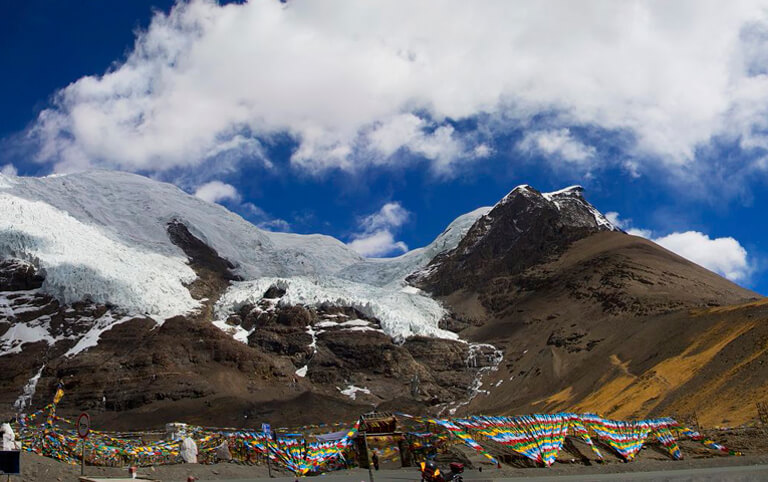 Get amazed by the stunning view of Karola Glaceier
Get amazed by the stunning view of Karola Glaceier
-
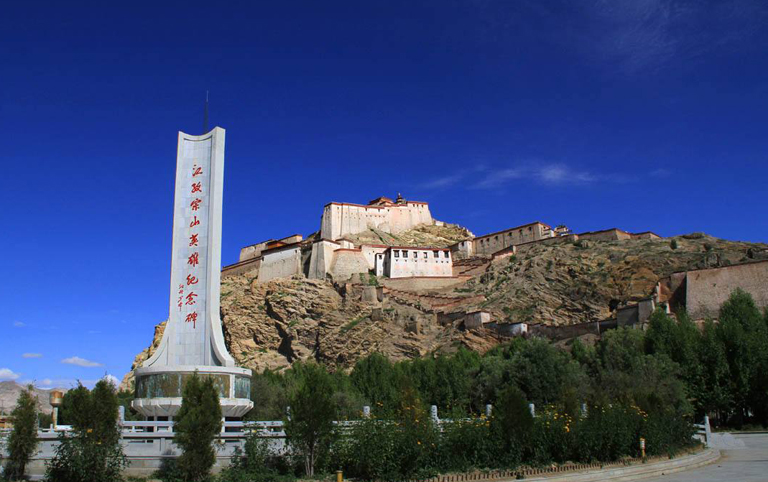 Gyantse Dzong Fortress
Gyantse Dzong Fortress
-
 Lake Yamdrok Yumtso with the view of Mt. Nojin Kangtsang
Lake Yamdrok Yumtso with the view of Mt. Nojin Kangtsang
Day 6 Gyantse – Shigatse ( B )
After breakfast, you will going to visit a very special site where you can learn about the living condition and tradition of old Tibet - Pala Manor. Located in a Tibetan village about 4km southwest from Gyantse city, Pala Manor is the only aristocratic manor preserved well in Tibet, and used to be the private manor of Pala families since 17th century. The aristocratic and the serfs both lived in the manor but completely different life. The aristocratic didn't need to work, lived in bright, large and luxury rooms, used costly furnitures and imported luxuries, such as OMEGA watch, LV purse, wine, etc. While the serfs lived in dark crude room in yards, got paid little but did all the labouring works. Fortunatly, the house, relics in the rooms are still remain the same as they used to be.
After the visit in Pala Manor, you will move to Shigase, which is about 2~3 hours' driving on road. After arrival, you are going to visit the most important monastery in Shigatse region - Tashilunpo Monastery.
Tashilhunpo Monastery is the seat of successive Panchen Lamas, aslo one of the six Gelug monasteries. Founded by the First Dalai Lama in 1447, its name means "all fortune and happiness gathered here" or "heap of glory" in Tibetan. Covering an area of nearly 150,000 square meters, the monastery has more than 57 halls and 3600 rooms. Among them, the Coqen Hall can hold 2000 people chanting at the same time. Featuring an interesting sprawling amalgam of traditional Tibetan monastic style, those halls, chapels and other structures are connected by precipitous steps and narrow cobblestone alleys. The interplay between the golden roofs and the white, red and black exterior walls creates a striking composition.
Have a good rest in Shigatse.
-
 Pala Manor
Pala Manor
-
 The Giant Statue of Qamba Buddha in Tashilumpo Monastery
The Giant Statue of Qamba Buddha in Tashilumpo Monastery
Day 7 Shigatse – Lhasa ( B )
Today you’ll drive back to Lhasa (5 hours) along the legendary Yaluzangbu River, the mother river of Tibet. On the halfway, you will take a visit to Nyemo Tunba which was the home of Tunmi Sangbuzha who invented the Tibetan character as well as the famous Tibetan Tibetan Incense. Here in Tunba, you also have chance to witness the process of making Tibetan Incense with water mill. At the same time, the scenery here is fabulous - ancient cypress trees, green willows, murmuring river...
Leave Tunba, keep driving to Lhasa. You will stop by at the place where is about 20km to Lhasa to take a short visit to the Nyethang Buddha which is coveniently located along the road, approximately 20km from Lhasa. Built in more than 700 years ago, the Nietang Buddha is the largest and highest stone Buddha in Tibet, and was colorfully painted by deep colors of golden, red, blue and black. West not far from the Buddha is the Nyethang Monastery where the famous ancient Indian Buddhist master Atisha meditated and taught Buddhism.
In the evening, you’ll have a Tibetan-style farewell dinner in a typical Tibetan restaurant, with traditional Tibetan songs and dances.
-
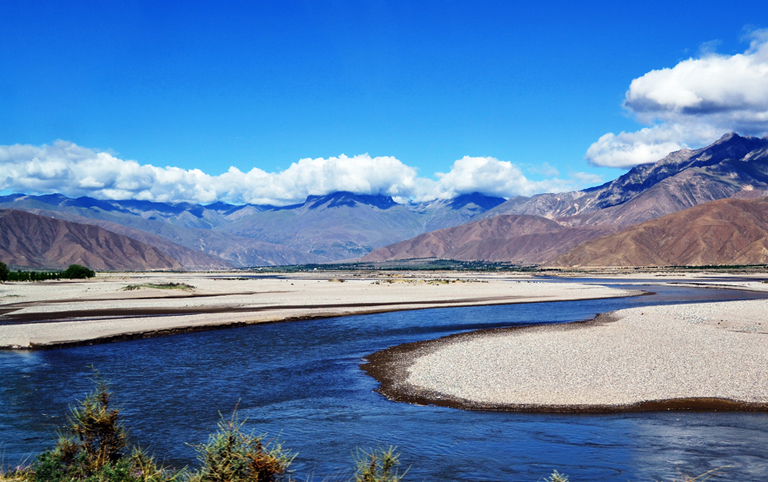 Yarlung Zangbo River - the Mother River of Tibet
Yarlung Zangbo River - the Mother River of Tibet
-
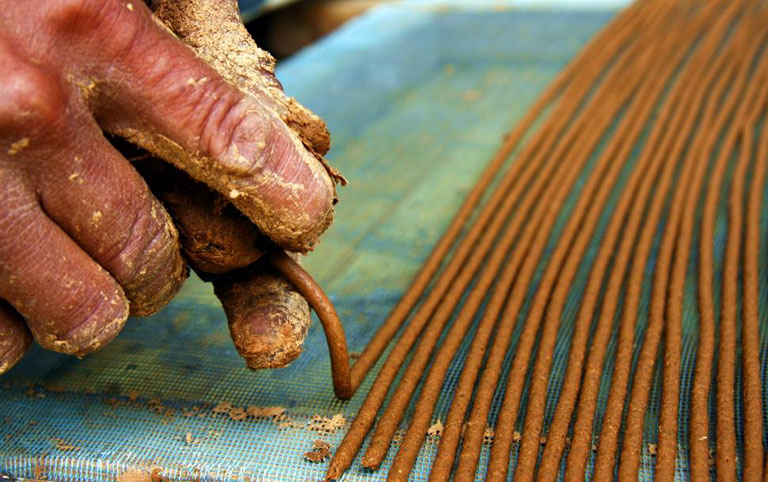 A worker is making Tibetan Incense
A worker is making Tibetan Incense
-
 Nyethang Buddha - Largest Stone Buddha in Tibet
Nyethang Buddha - Largest Stone Buddha in Tibet
Day 8 Lhasa Departure ( B )
Today is free for you until your tour guide transfer you to the airport in time for your flight or drop you off at Lhasa train station.
Tips of Today: 1) please pack your luggage carefully, especially for small things like camera charger, power adaptor, mobile phone, phone charger, wallet and towel; 2) If your flight is arranged in the afternoon, please make sure you check out the hotel before 12pm.
Useful Trip Notes
Recommended Tibet Group Tour Packages
Escorted by a skilled driver and companied by a professional local tour guide to organize all the activities, all you have to do is to enjoy your fantastic Tibet journey.Following are some other recommended Tibet group tour packages that you may be interested in. You can also contact us to customize a trip if you want..
-

Lhasa city and suburb
4 Days Lhasa Short Stay for Family
Highlights: Potala Palace, Barkhor Street, Dickey Orphanage
-

Lhasa city and suburb
5 Days Holy Land of Lhasa Family Tour
Highlights: Highlights: Potala Palace, Sera Monastery, Dickey Orphanage
-
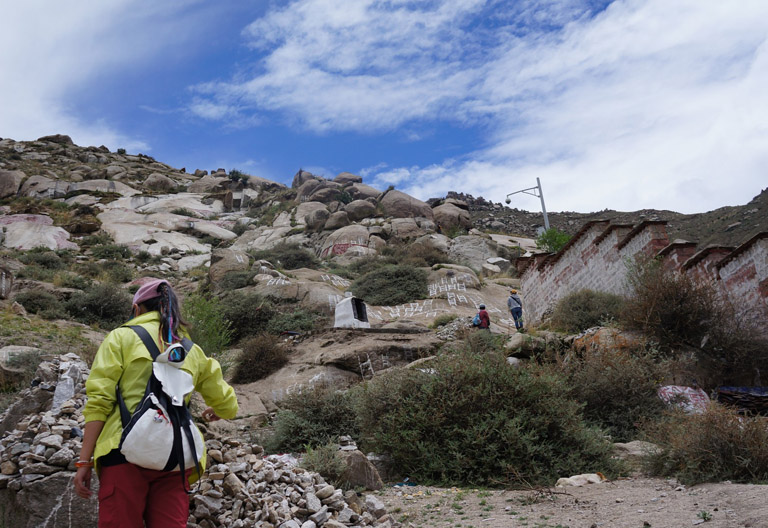
Lhasa city and suburb
5 Days Lhasa Leisure Hiking Tour
Highlights: Potala Palace, Jokhang Temple, Mountain Hiking



 Karen
Karen Wonder
Wonder Jack
Jack Rita
Rita Johnson
Johnson Vivien
Vivien Wing
Wing Ariel
Ariel Leo
Leo Tracy
Tracy Evelyn
Evelyn April
April Phoebe
Phoebe Kelly
Kelly Shirley
Shirley Reya
Reya Juliet
Juliet Elk
Elk Samantha
Samantha Felix
Felix Sean
Sean